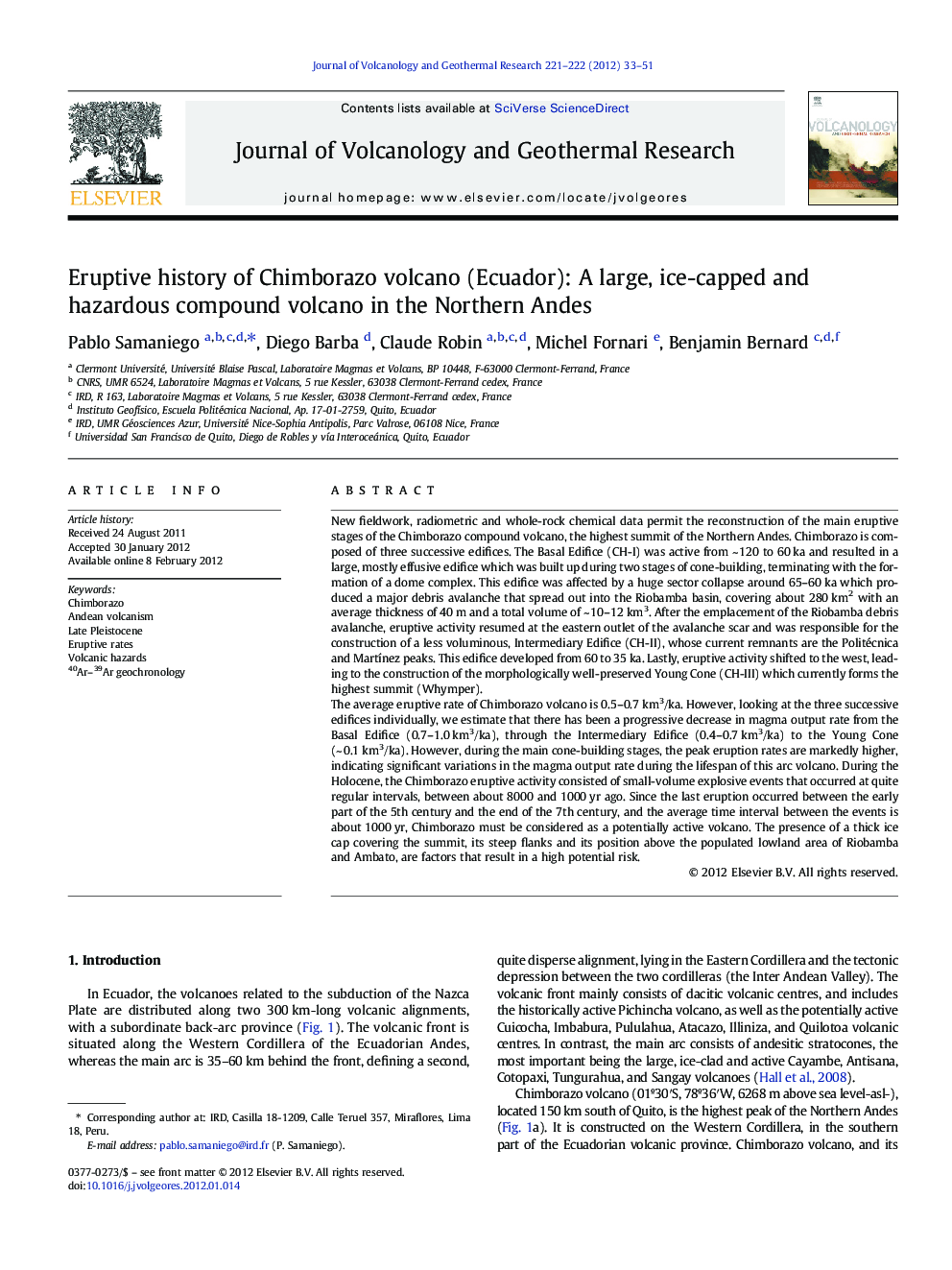| کد مقاله | کد نشریه | سال انتشار | مقاله انگلیسی | نسخه تمام متن |
|---|---|---|---|---|
| 4713418 | 1638386 | 2012 | 19 صفحه PDF | دانلود رایگان |

New fieldwork, radiometric and whole-rock chemical data permit the reconstruction of the main eruptive stages of the Chimborazo compound volcano, the highest summit of the Northern Andes. Chimborazo is composed of three successive edifices. The Basal Edifice (CH-I) was active from ~ 120 to 60 ka and resulted in a large, mostly effusive edifice which was built up during two stages of cone-building, terminating with the formation of a dome complex. This edifice was affected by a huge sector collapse around 65–60 ka which produced a major debris avalanche that spread out into the Riobamba basin, covering about 280 km2 with an average thickness of 40 m and a total volume of ~ 10–12 km3. After the emplacement of the Riobamba debris avalanche, eruptive activity resumed at the eastern outlet of the avalanche scar and was responsible for the construction of a less voluminous, Intermediary Edifice (CH-II), whose current remnants are the Politécnica and Martínez peaks. This edifice developed from 60 to 35 ka. Lastly, eruptive activity shifted to the west, leading to the construction of the morphologically well-preserved Young Cone (CH-III) which currently forms the highest summit (Whymper).The average eruptive rate of Chimborazo volcano is 0.5–0.7 km3/ka. However, looking at the three successive edifices individually, we estimate that there has been a progressive decrease in magma output rate from the Basal Edifice (0.7–1.0 km3/ka), through the Intermediary Edifice (0.4–0.7 km3/ka) to the Young Cone (~ 0.1 km3/ka). However, during the main cone-building stages, the peak eruption rates are markedly higher, indicating significant variations in the magma output rate during the lifespan of this arc volcano. During the Holocene, the Chimborazo eruptive activity consisted of small-volume explosive events that occurred at quite regular intervals, between about 8000 and 1000 yr ago. Since the last eruption occurred between the early part of the 5th century and the end of the 7th century, and the average time interval between the events is about 1000 yr, Chimborazo must be considered as a potentially active volcano. The presence of a thick ice cap covering the summit, its steep flanks and its position above the populated lowland area of Riobamba and Ambato, are factors that result in a high potential risk.
► Chimborazo is composed of three successive edifices, constructed since ~ 120 ka to Holocene times.
► Basal Edifice was affected by a huge sector collapse, whose volume is 10–12 km3.
► Chimborazo rocks are mostly andesites (57–62 wt.% SiO2), with minor basic andesites and dacites.
► Magma output rates show a progressive decrease through the volcano's history.
► Holocene activity was characterized by repetitive small-volume phreatomagmatic eruptions.
Journal: Journal of Volcanology and Geothermal Research - Volumes 221–222, 1 April 2012, Pages 33–51